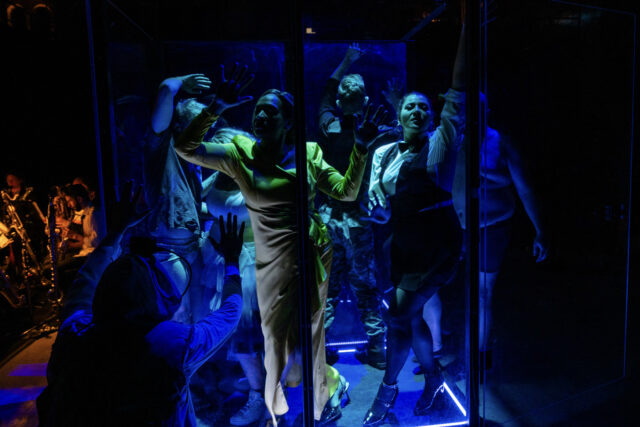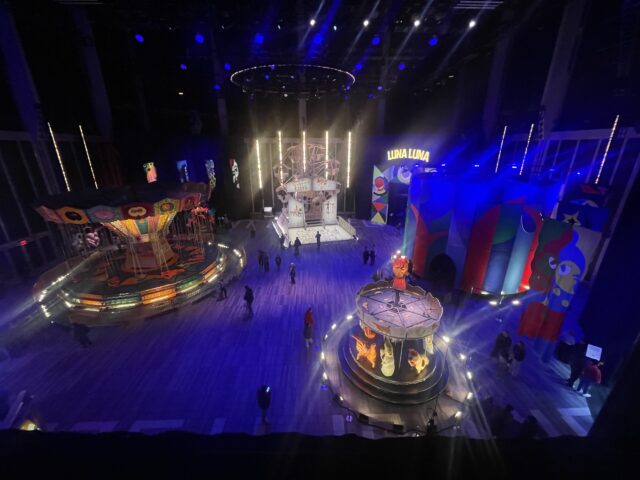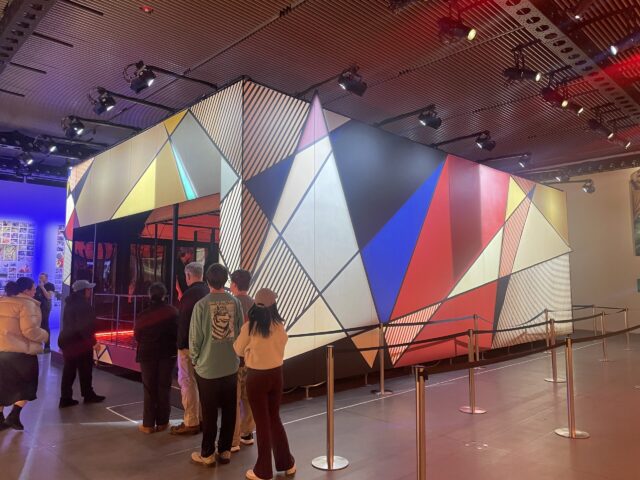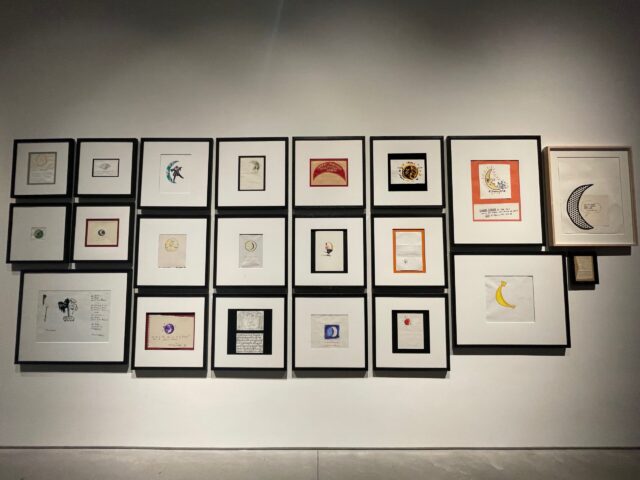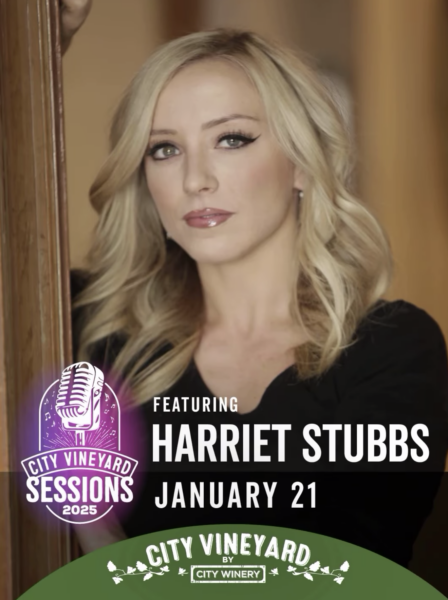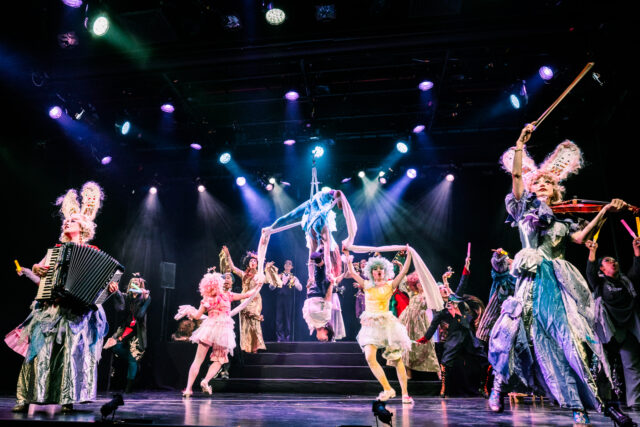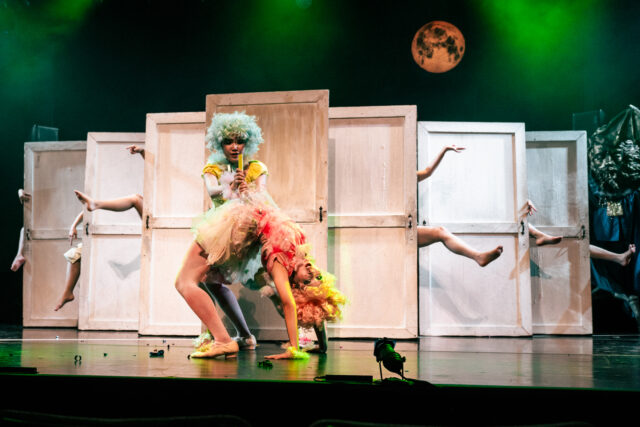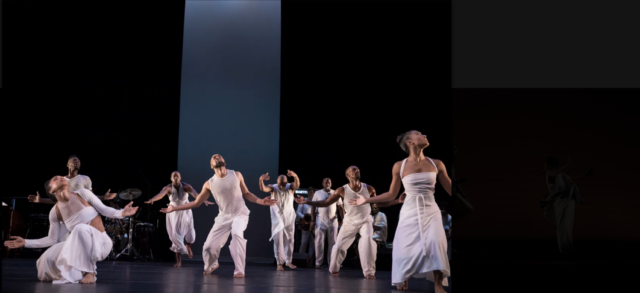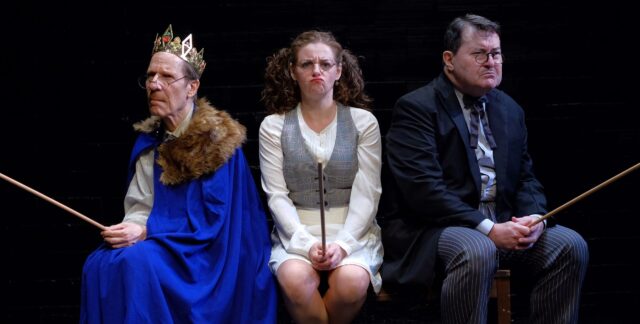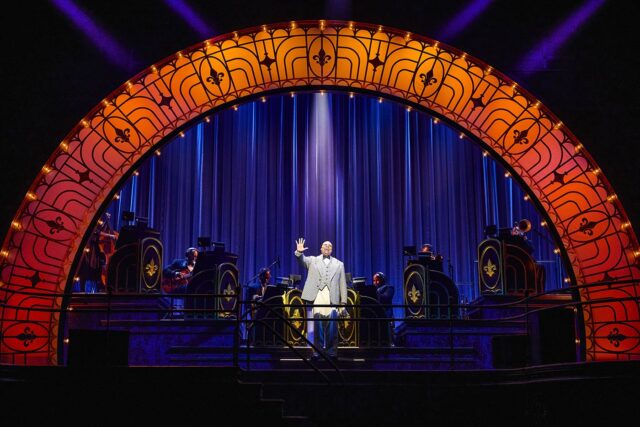
Louis Armstrong (James Monroe Iglehart) waves goodbye to Broadway in A Wonderful World (photo by Jeremy Daniel)
A WONDERFUL WORLD: THE LOUIS ARMSTRONG MUSICAL
Studio 54
254 West 54th St. between Seventh & Eighth Aves.
Tuesday – Sunday through February 23, $69-$278
louisarmstrongmusical.com
Jukebox musicals generally come in two basic kinds of flavors: somewhat-fact-based accounts of superstars (Tina Turner, Cher, the Temptations, Michael Jackson, Neil Diamond, Frankie Valli and the Four Seasons, Carole King) and original narratives based on the work of one composer, performer, or era (Alanis Morissette, Jagged Little Pill; Britney Spears, Once Upon a One More Time; Max Martin, & Juliet; the Go-Go’s, Head Over Heels; the 1970s, Rock of Ages).
A pair of current shows use contrasting approaches, but while one has been extended several times, the other has posted an early closing notice.
At Studio 54, A Wonderful World: The Louis Armstrong Musical tells the fact-based story of the American trumpeter and singer known as Satchmo (James Monroe Iglehart), concentrating on the songs he performed throughout his career, while at the West End Theatre, Music City relates a fictional contemporary tale of the search for fame and love, consisting of tunes by country songwriter J. T. Harding, who has penned hits for Uncle Kracker, Kenny Chesney, Keith Urban, Blake Shelton, Dierks Bentley, Darius Rucker, and others.
A Wonderful World features nearly thirty jazz and jazz-adjacent tunes as the narrative divides Armstrong’s story into four sections, each with a different woman by his side: tough-talking prostitute Daisy Parker (Dionne Figgins) in New Orleans, jazz pianist Lil Hardin (Jennie Harney-Fleming) in Chicago, dancer Alpha Smith (Kim Exum) in Hollywood, and Cotton Club performer Lucille Wilson (Darlesia Cearcy) in New York. Although the song list is impressive, with such numbers as “Basin Street Blues/Bourbon Street Parade,” “Up a Lazy River,” “Black and Blue,” “Heebie Jeebies,” “Do You Know What It Means to Miss New Orleans,” and “After You’re Gone,” many of them are given short shrift rather than full renditions, matching the lack of insight into what made Armstrong the larger-than-life figure he was.
Aside from finding out about his four wives, there is little new audiences will learn about Louis; even when it deals with racism, the focus gets lost, outshone by Armstrong’s huge showmanship and popular success and all his preening. Adam Koch and Steven Royal’s heavily blue sets are glitzy and Toni-Leslie James’s costumes are flashy, but the book, by Aurin Squire, conceived by Andrew Delaplaine and Christopher Renshaw, merely brushes the surface, and the direction, by Iglehart and Christina Sajous, is worshipful where it should be articulate.
Figgins (Memphis, Motown), Harney-Fleming (Hamilton, The Color Purple), Exum (The Book of Mormon), and Cearcy (The Color Purple, Ragtime) steal the show from Tony winner Iglehart (Aladdin, Hamilton), who seems to be playing a caricature of Armstrong, never reaching the necessary depth. Dewitt Fleming Jr. (The Tap Dance Kid, Pearl) gives nuance to Lincoln Perry, better known as Stepin Fetchit, while Gavin Gregory (The Gershwins’ Porgy & Bess, The Color Purple) plays hard-luck bandleader “King” Oliver.
A Wonderful World recently announced that it will be closing early, on February 23; overall, it was a missed opportunity.
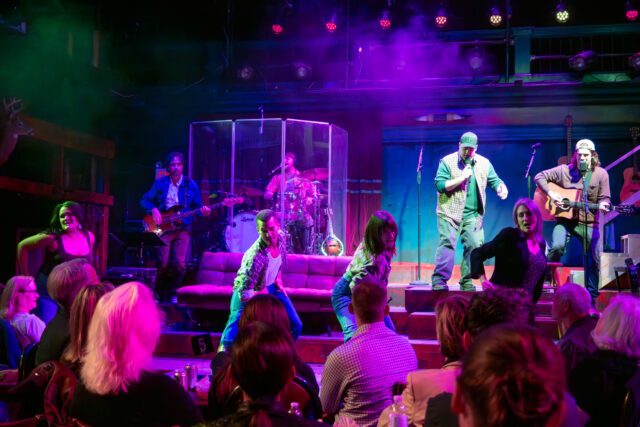
Music City brings Nashville to the Upper West Side (photo by Ashley Garrett)
MUSIC CITY
West End Theatre
Church of St. Paul and St. Andrew
263 West Eighty-Sixth St. at West End Ave.
Tuesday – Sunday through March 2, $68 – $130.50
bedlam.org
Despite an exciting, promising first act, Bedlam’s Music City: A New Musical, which opened on November 17 and has been extended three times, the latest until March 2, also ends up being a missed opportunity.
Last year, I visited Nashville with friends and fell in love with the live music pouring out of every bar, club, and honky tonk and into the crowded streets, where people were partying well into the night. Director Eric Tucker and book writer Peter Zinn capture that energy on Clifton Chadick’s lifelike set, which transforms the theater at the Church of St. Paul and St. Andrew on the Upper West Side into the Wicked Tickle, a seedy watering hole in East Nashville. The audience sits at small tables as if they are guests at the club, where they can get drinks, check out the (fake) memorabilia on the walls, and whoop it up as the narrative unfolds around them.
About a half hour before curtain, an open mic begins, introducing some of the characters, so get there early and soak in the realistic atmosphere. The show proper begins with brothers TJ (Stephen Michael Spencer) and Drew (Jonathan Judge-Russo) performing their rousing “Y’allsome,” in which they declare, “Y’all ain’t scared to have a little fun. / Whiskey shots from a water gun. / Ain’t slowing down — / And here comes the sun! / Y‘allsome party people. / Y’allsome crazy mothers. / Y’allsome freakin’ good lookin’ country music lovers! / Hankin’ and drankin’ all wrecking ball shaking the walls.”
When they’re done, Drew, who comes up with the titles and ideas for the songs, and TJ, who writes the music and lyrics, are approached by Leeanne (Leenya Rideout), a slick record executive who wants to hear their demo, as she’s scouting tunes for country superstar Stucky Stiles’s (Andrew Rothenberg) next tour and album.
They don’t have a demo, so Drew decides to ask local drug dealer and open-mic regular Benjamin Bakerman (Rothenberg) to invest two grand in their band so they can afford studio time. Bakerman instead offers them the opportunity to earn the cash by delivering “cookies” for him. TJ is initially against the plan, but Drew talks him into it.
Soon TJ is handing off bags of meth to such junkies as Tammy (Rideout), a former wannabe country star. “Bet you think you’re gonna be a big ol’ star one day just like everyone else in this shithole town,” she says, lighting up her pipe. “I remember when I used to walk around Nashville with a guitar on my back. I wish somebody woulda told me back then how ridiculous I looked.”
At the next open mic, TJ instantly falls for a young woman named 23 (Casey Shuler) as she plays a deeply personal ballad, singing, “Like soldiers coming home from war / Who am I to want something more?”
With money in their pockets, TJ and Drew start working on their demo in drummer Newt’s (Drew Bastian) studio. Meanwhile, Stucky wants to be recording his own songs instead of party tunes written by others, but Leeanne tells him that ship has sailed.
TJ and 23 connect and start writing together, Stucky comes to the Wicked Tickle, and relationships get twisted and complicated as Bakerman keeps putting pressure on TJ to sell his product.
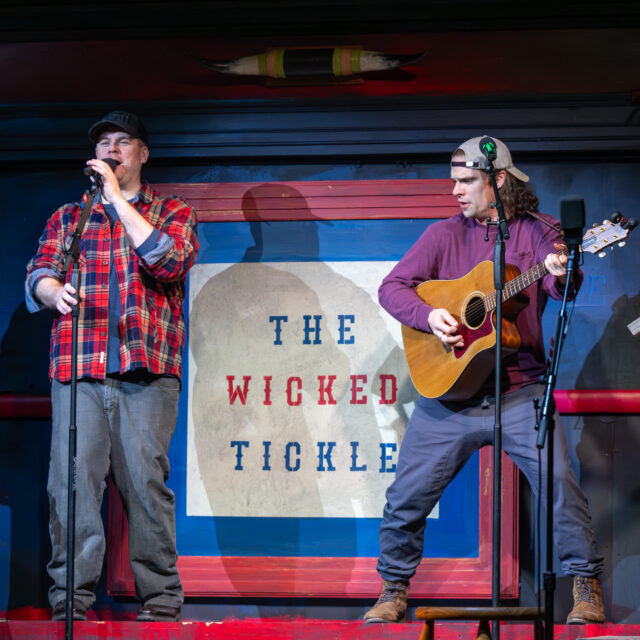
Drew (Jonathan Judge-Russo) and TJ (Stephen Michael Spencer) contemplate a shot at the big time in Music City (photo by Ashley Garrett)
Unfortunately, Tucker (Uncle Romeo Vanya Juliet, Sense and Sensibility) and Zinn (Rumspringa, Somewhere with You) throw in the kitchen sink in the second act, heaping on trauma after trauma, leading to a mind-boggling finale that comes out of nowhere and pulls everything that happened before down with it. In addition, John Heginbotham’s choreography, performed by Corry J Ethridge and Holly Wilder, seems to have come from a completely different show.
It’s a shame, because nearly all the other elements are in place: The backup band, featuring Ann Klein on guitars, Tony Tino on bass, Bastian on drums, and emcee and music director Julianne B. Merrill on keyboards, is excellent, keeping things hopping throughout, and the cast is charming and engaging, especially Spencer (Clyde’s, Julius Caesar) and Shuler (Titanic, Robin Hood), who make an adorable couple. The twenty songs, which include “Smile” (a hit for Uncle Kracker), “Somewhere with You” (Chesney), and “Alone with You” (Jake Owen), range across the country spectrum like a live jukebox, although “Sangria” (Shelton), which gets the spotlight, doesn’t carry enough weight here.
Then again, the PBRs are cheap, the staging is fun, and, hey, it’s Nashville in New York, which is some kind of wonderful.
[Mark Rifkin is a Brooklyn-born, Manhattan-based writer and editor; you can follow him on Substack here.]
